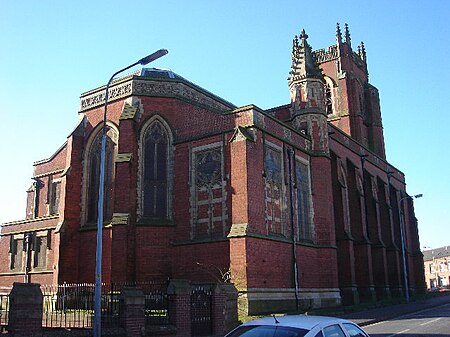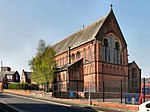Church of All Souls, Bolton
1881 establishments in England19th-century Church of England church buildingsBuildings and structures in BoltonChurches completed in 1881Churches preserved by the Churches Conservation Trust ... and 5 more
Former churches in Greater ManchesterGothic Revival church buildings in Greater ManchesterGrade II* listed churches in Greater ManchesterPaley and Austin buildingsUse British English from September 2013

The Church of All Souls is a redundant Anglican church in Astley Street, Astley Bridge, Bolton, Lancashire, England. It is recorded in the National Heritage List for England as a designated Grade II* listed building, and is under the care of the Churches Conservation Trust. As of 2010, the church is being converted into a community centre.
Excerpt from the Wikipedia article Church of All Souls, Bolton (License: CC BY-SA 3.0, Authors, Images).Church of All Souls, Bolton
Astley Street,
Geographical coordinates (GPS) Address Website External links Nearby Places Show on map
Geographical coordinates (GPS)
| Latitude | Longitude |
|---|---|
| N 53.5937 ° | E -2.4339 ° |
Address
All Souls Bolton
Astley Street
BL1 8EY , Halliwell
England, United Kingdom
Open on Google Maps





